20 June 2022
Controlling red spider mite by John the Green Gardener
A quick guide to using natural pest control for red spider mite
It is impossible to control red spider mite using traditional insecticides – they just don’t work. But it can be a devastating pest of plants under glass and to a lesser extent outside. To control you must use a combination of cultural and biological control to keep this pest at bay.
How it works – Red spider mite is tiny-just visible to the naked eye. It is not normally red through the growing season. It can be green, orange or even black but it will have 2 black spots towards the rear of its body. In the autumn the female turns bright red and laden with eggs searches for cracks and crevices in which to hide over the winter. In the spring the females swing down onto your plants and lay eggs starting the next generation. The mite feeds by sucking the sap out of cells on the underside of the leaf and the leaf develops a mottled appearance. As more cells are attacked the leaf will turn brown and eventually die. The mites will move up the plant and if numbers continue to increase, they will start to produce fine webs across the leaf joints. Eventually more leaves die and the plant will be defoliated.
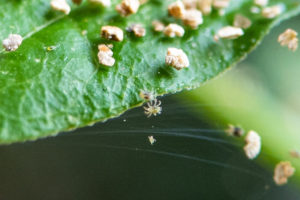
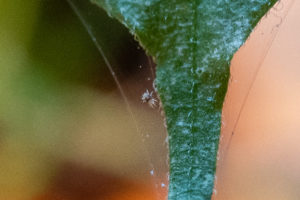
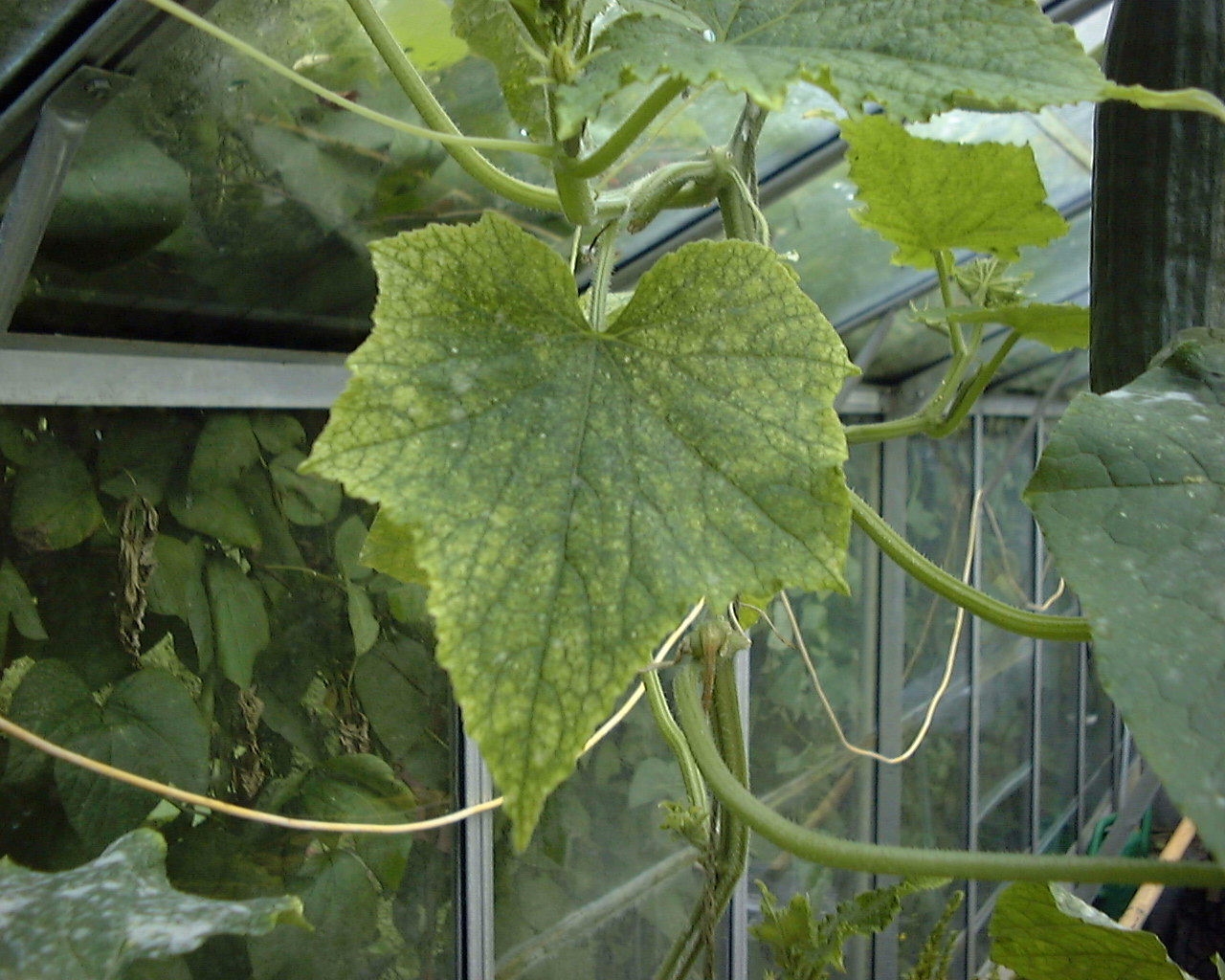
Natural Bio-controls – To control this pest there are 2 beneficial insects you can use, which are released onto your plants and will feed on the spider mites. Both are predators eating red spider mite but they are used in slightly different ways :-
- Phytoseiulus – This is a tiny mite that feeds on all stages of the red spider mite from eggs to adult eating up to 7 per day. Supplied in small plastic vials in sawdust, simply sprinkle on the leaves of infected plants at the first signs of attack. It is most effective at temperatures between 16 and 30C.
- Amblyseius andersonii – Another tiny mite that will eat red spider mite and will work well at lower temperatures-10C and higher temps- over 30C. Amblyseius andersonii is supplied in sachets containing a breeding colony together with food. From the colony adults will emerge over a 2-month period and feed on red spider. They also feed on other insects and pollen so are able to survive even if there are no red spider about-so if you have had red spider problems in the past, introduce before you see any damage and the Amblyseius andersonii will ambush them protecting your plants. If temperatures are regularly over 30C then use Amblyseius andersonii as Phytoseiulus are not effective at these temperatures preferring to siesta at the base of the plant rather than feast on red spider mite. Please note: If red spider is attacking citrus, then use Amblyseius andersonii as it is more effective that Phytoseiulus.
Your quick guide to using Amblyseius andersonii and Phytoseiulus – the safe, effective, natural way to control red spider mite under glassStart clean: This is very important particularly if you have had red spider problems in previous years. Adult red spider overwinter in cracks and crevices in and around the greenhouse. Use a Natural Disinfectant to clean the greenhouse, tools, pots etc.
- Inspect plants regularly for signs of damage – The first signs of attack are difficult to spot with a slight marbling of the leaf. Turn the leaf over and hold the leaf to the light- you should just be able to see the spider mite running away from the light-remember they will not be red- normally green/orange/straw coloured with 2 black spots at the rear end. If they have been overwintering, they will often wake up after a rapid increase in temps. which often occurs in early spring in a greenhouse
- At temps below 6C – Red spider damage unlikely but could happen near a heater. Spray using Sb Invigorator natural spray concentrating on the underside of the leaves. Spraying with soft water raising the humidity will also slow down the attack.
- At temperatures over 6C Introduce Amblyseius andersonii – This predatory mite should be used early in the season as soon as there is evidence of red spider damage. Where there is a history of the pest introduce before the pest arrives. Amblyseius andersonii is supplied as a breeding colony with some food in a sachet. Hang the sachet on the shaded side of the plant. Over a 6 week period adults will emerge and feed on red spider. Don’t worry if there are no red spider, Amblyseius andersonii is very adaptable and can feed on other mites- cyclamen mite for example and on pollen. These mites will be waiting for red spider to arrive when they will leap into action. N.B. Amblyseius andersonii is most effective against low level of infections so introduce early.
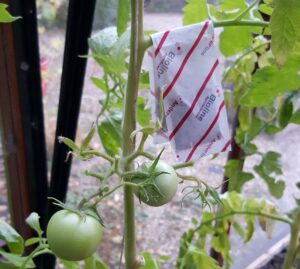

- At temperatures over 10C Introduce Phytoseiulus – As temperatures rise populations of red spider can increase very quickly so switch to using Phytoseiulus as the main control method. It is supplied in vials with a carrier of sawdust. Sprinkle on to leaves near the growing point. If leaves are small tip onto squares of paper balanced on the leaf. The Phytoseiulus is very active and aggressive and will quickly explore the plant searching for red spider. Phytoseiulus is most effective at temperatures between 16 and 30C with high humidity so on sunny days damp down the foliage, staging and paths etc. Concentrate the water spray on the underside of the leaf where most of the red spider and Phytoseiulus will be. All plants will benefit from increased humidity on hot days so don’t be afraid to slosh the water about. Avoid flowers and hairy leaved plants which may scorch and do not damp down in the afternoon so that foliage goes into the night dry- this reduces the chance of fungal disease such a botrytis/grey mould.
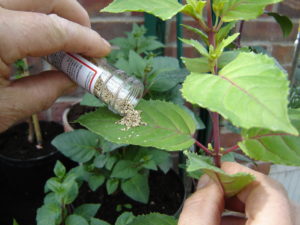
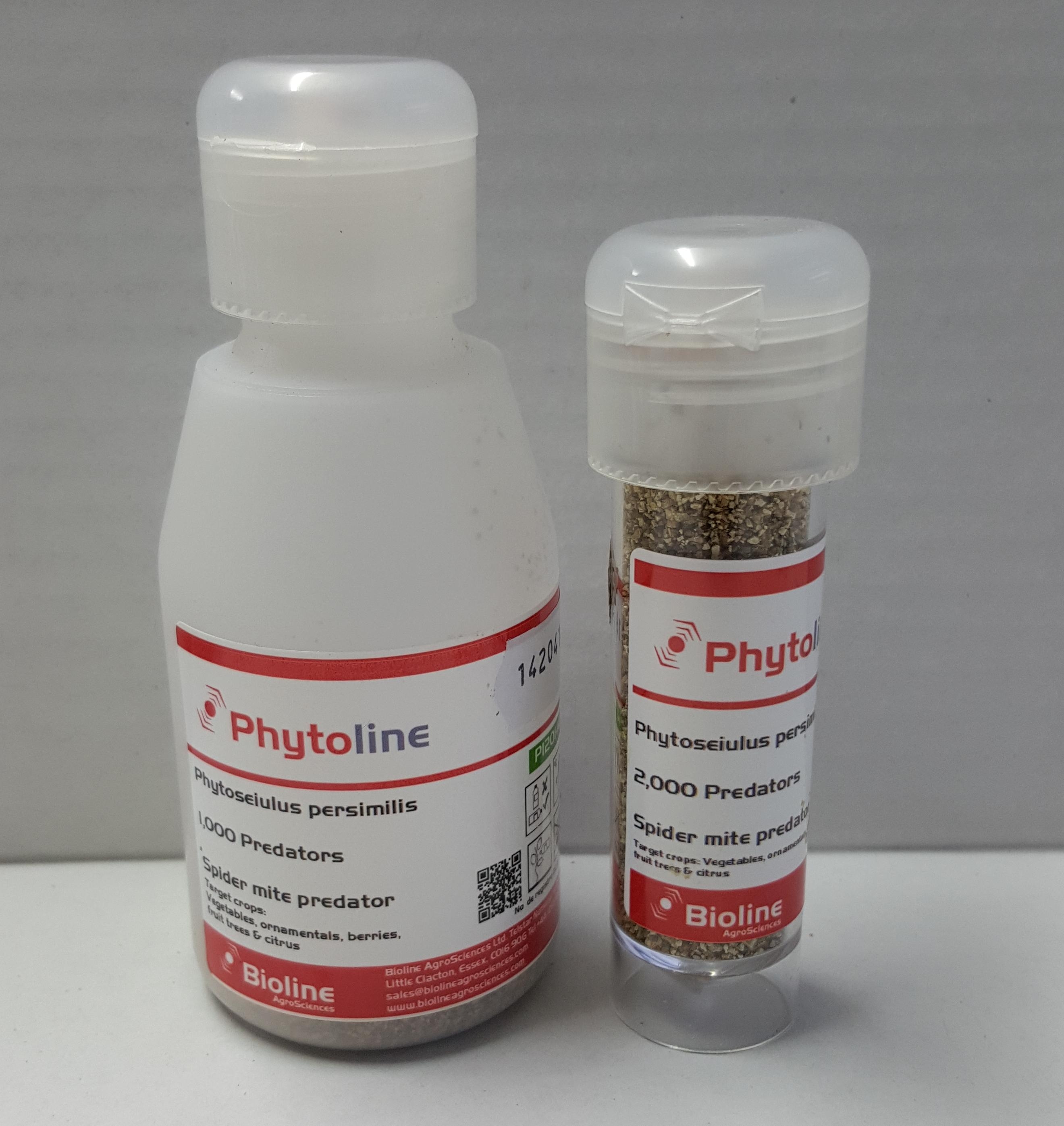
- At temperatures above 30C Introduce Amblyseius andersonii – Above 30C Phytoseiulus is not effective so revert back to Amblyseius andersonii. However, temperatures as high as this will also restrict plant growth so try to reduce temperatures by damping down, shading and maximum ventilation.
- At the end of the season: As temperatures decline in the autumn female red spider leave the plants and settle down in the cracks and crevices of the greenhouse. Remove as destroy as much damaged plant growth as possible before the female red spider depart for their winter quarters. Leave the remaining plants in situ and use garlic candles to reduce population of red spider.
Top tips for success –
- Do not use insecticides before introducing bio control.
- Introduce bio-controls as soon as you see the pest and temperatures are high enough.
- Red spider is a pest of dry conditions, so damp down frequently to raise humidity.
Available to buy now
Phytoseiulus 2000
Control Red Spider Mite by introducing Phytoseiulus AS SOON as you see RSM and the temp is 16C/61F (& below…
Amblyseius Andersonii
Amblyseius Andersonii is a LOW / HIGH temperature predator of Red Spider Mite, which is much more tolerant of extreme temperatures,…
Natural Horticultural Disinfectant 1L
This Horticultural Disinfectant is exclusive to Green Gardener, is made in the UK, is 100% sustainable and is ideal for cleaning…
Sb Invigorator Concentrate
Use SB Invigorator to control a wide range of insect pests including aphids, mealy bug, wooly aphids, scale etc naturally PLUS it…
